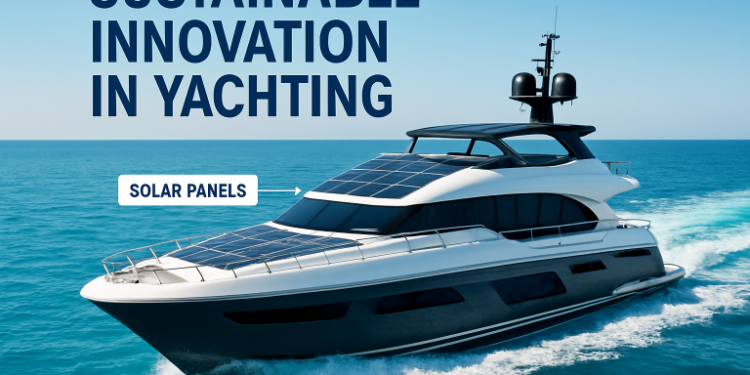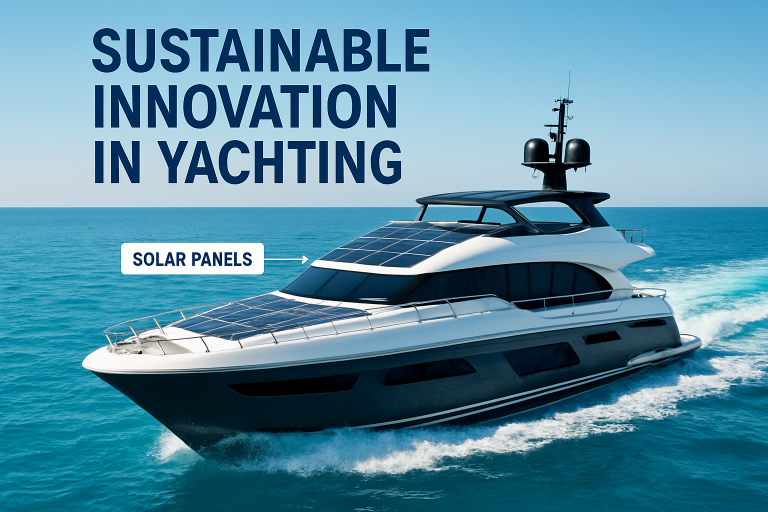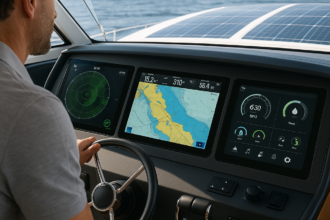How Sustainable Boating Is Shaping the Future of Luxury Yachting

The world of luxury yachting is undergoing a profound transformation, with sustainability rapidly becoming a central concern. As owners and manufacturers recognize their broader environmental responsibilities, the sector is shifting to incorporate cleaner, greener technologies and eco-conscious lifestyles aboard high-end vessels. Through new engineering solutions and ethical material choices, the spirit of innovation in yachting is evolving to address the impacts of climate change and marine pollution. Modern luxury yachts are equipped with advanced features that enhance comfort and reduce waste and emissions. What once was seen as an indulgent form of recreation is swiftly pivoting to prioritize environmental stewardship, encouraging a new ethos among owners, designers, and marine professionals alike. This drive toward sustainability is setting a blueprint for responsible yachting that doesn’t compromise on elegance or performance.
As the momentum for yacht innovation increases, client expectations are evolving due to informed consumers, stricter regulations, and climate change. There is a rising demand for sustainable designs that do not compromise luxury. Collaboration among manufacturers, suppliers, and regulatory bodies is promoting sustainable practices, ensuring a prosperous future for yachting while preserving marine ecosystems.
Table of Contents
Hybrid Propulsion Systems
One of the most significant innovations in sustainable yachting is the integration of hybrid propulsion systems. By blending traditional diesel engines with electric motors, yacht builders can cut fuel consumption and emissions dramatically while enhancing the overall quietude and efficiency of cruising. These hybrid systems enable operators to cruise silently in electric mode, which is particularly beneficial in ecologically sensitive marine areas. As an industry milestone, Feadship’s Project 821 launched as the first superyacht with an operational fuel cell system onboard—demonstrating tangible progress toward low-impact marine travel and reduced reliance on diesel generators. This step forward indicates a new norm: luxury and sustainability can indeed coexist. ([feadship.nl](https://www.feadship.nl/fleet/project-821?utm_source=openai))
Renewable Energy Integration
Beyond propulsion, onboard renewable energy solutions are a hallmark of the modern luxury yacht. Solar panels, advanced battery systems, and even wind turbines are increasingly designed into new vessels, providing clean power for everything from propulsion to amenities. The Sunreef Eco Explorer 40m, for example, incorporates expansive solar arrays that power both its movement and its many onboard systems, significantly reducing the yacht’s carbon footprint during operation. Such advances are critical as the sector seeks to remain both aspirational and environmentally responsible.

Eco-Friendly Materials
The movement toward greener yachts doesn’t stop with the engine room—it extends to the selection of materials used throughout construction. A growing number of shipyards are now sourcing recyclable composites, sustainably harvested woods, and bio-based resins that lower the ecological toll of each vessel. These materials ensure that the highest standards of comfort and aesthetics are preserved while circularity and recyclability are promoted. As customers become increasingly conscious of product lifecycles, these decisions resonate far beyond the dock, driving the reputation and desirability of eco-forward brands.
Green Interior Design
Yacht interiors are likewise evolving, adopting a blend of opulence and environmental consciousness. Designers now select recycled metals, FSC-certified timbers, and cruelty-free leathers that not only feel luxurious but also embody a respect for nature and ethical sourcing. Special attention is also paid to paints, adhesives, and finishes to ensure they are low in volatile organic compounds (VOCs), protecting both passengers and the wider marine habitat. In effect, sustainable design is becoming an art form, harmoniously blending beauty with purpose and principle.
Smart Energy Management
Intelligent systems are revolutionizing onboard energy efficiency. Many luxury yachts are now equipped with advanced automation and AI-driven management tools, enabling real-time monitoring and optimization of energy use. These systems recommend the most fuel-efficient routes and adjust lighting, HVAC, and other amenities according to consumption trends and guest preferences. With the maritime AI sector expected to exceed $1 billion by 2024, this technology slashes emissions and elevates the convenience and customizability of life at sea.
Regulatory Influence
Regulatory authorities worldwide are enacting policies to make sure yachts minimize their environmental impact, from emissions controls to stricter construction guidelines. The European Union’s recent inclusion of maritime transport in its emissions trading system underscores the pressure on manufacturers and owners to fast-track green technology integration. Similar initiatives in the United States and Asia are spurring a wave of compliance-driven innovation, as the sector prepares for a more heavily regulated and accountable future.
Conclusion
The ongoing shift towards sustainability is charting a vibrant new course in the world of luxury yachting. Through hybrid propulsion, renewable energy, eco-friendly construction, and intelligent management, the industry is redefining what it means to travel in unmatched comfort without harming the ocean’s fragile beauty. These innovations ensure that the grandeur and adventure of yachting can be safely relished for generations—preserving both the luxury experience and the planet’s blue horizons.






